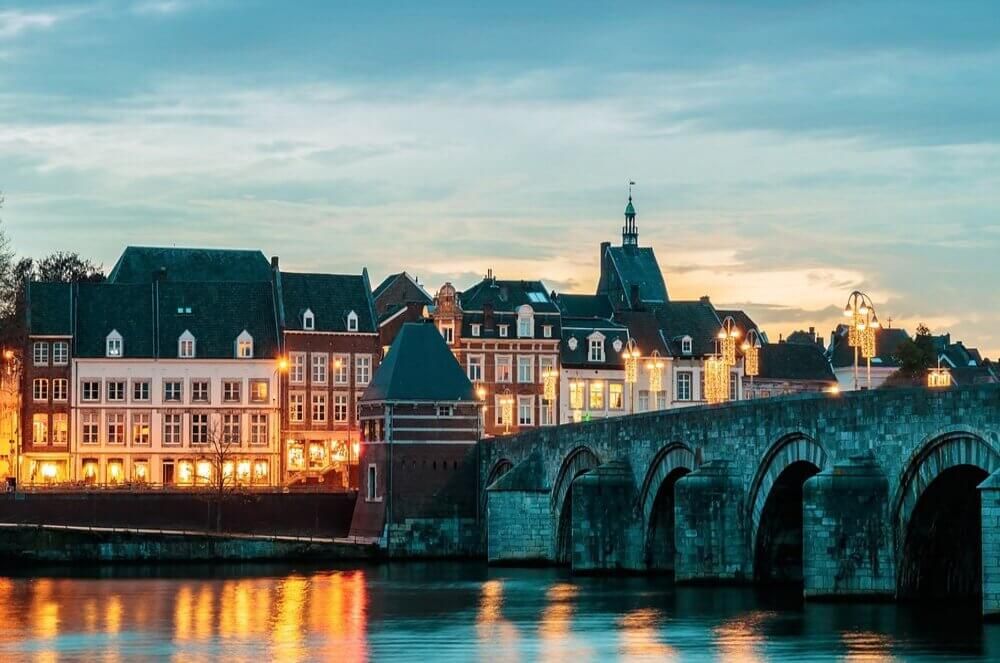Maastricht, the oldest city in the Netherlands

Maastricht is the oldest city in the Netherlands, the southeasternmost city wedged between Belgium and Germany and the site where the remains of a large prehistoric reptile were found. What is there to know about it and how to spend a pleasant day there?
History of Maastricht
The name Maastricht comes from Latin and simply means “crossing the Mosa”. Trajectum ad Mosam or Mosae Trajectum was the name given to the settlement by the Romans, who built a bridge over the river during the reign of Emperor Octavian Augustus.
Close to where the town now stands, Palaeolithic remains dating back up to 25,000 years have been discovered, indicating that people lived there for a long time. Several hundred years before the Romans arrived in the area, the area around Maastricht was controlled by the Celts.
In the Middle Ages Maastricht belonged to the Carolingian Empire, and after its collapse it was transformed into a condominium under the joint rule of the duchies of Brabant and Liège.
Due to its strategic location, the city has always been heavily fortified and many battles have been fought over it. In the early 17th century, Frederick Henry of Orange snatched it from Spanish hands, and just a few decades later it was fought over in the Franco-Dutch War. The troops of Louis XIV captured the city, but after signing a peace treaty, it returned to Dutch hands. Not for long. The French took over Maastricht twice more.
After the fall of Napoleon, the city again became part of the United Kingdom of the Netherlands and the capital of the newly created province, Limburg. But that was not the end of the story! When part of the province split from the Kingdom and formed the autonomous state of Belgium, Maastricht decided to remain loyal to the crown, but the area around it came under Belgian influence for a time.
The oldest city in the country
Maastricht and Nijmegen have been battling for years for the baton of supremacy as to which city is the oldest in the Netherlands. Maastricht and Nijmegen were not officially granted city status until 1204, but surviving historical sources clearly show that long before this date, Maastricht was thriving and looked nothing like the average medieval settlement.
Nijmegen, on the other hand, can boast a reference to the city being granted a town charter while the Romans were still ruling the area, around 89. The dispute between the two towns remains unresolved to this day, and a trip to Maastricht will certainly earn the locals’ favour by putting them right.
The great lizard
There are limestone quarries in the Maastricht area and in one of them, at the end of the 18th century, fossils of one of the largest lizards in the history of our planet were found (it was up to 17 metres long!). This group of extinct marine reptiles is now called the Mozosaurs, after the Meuse River, and the period from which the remains come, the youngest Cretaceous age, is called the Mastrycht.
Moving to Maastricht
If you are looking to move to the Netherlands, you may be interested in this particular city. Maastricht is a lovely city, so once you’ve decided on it and found a flat, it’s worth looking for a suitable moving company to move your furniture to your new home. It is also a good idea to plan such things in advance, so that nothing surprises us and we get to know the neighbourhood and neighbours without worrying about our possessions, work or home.
